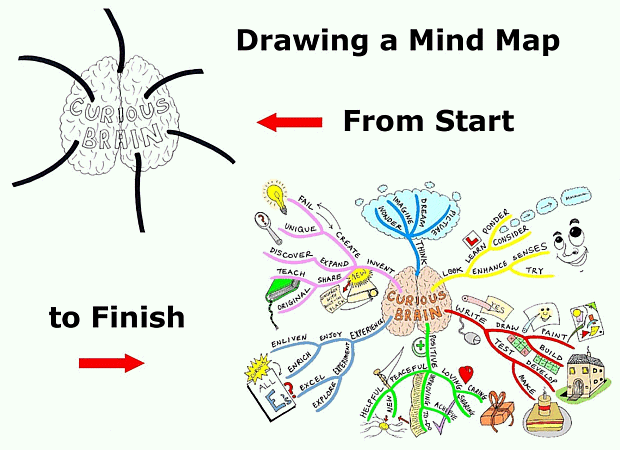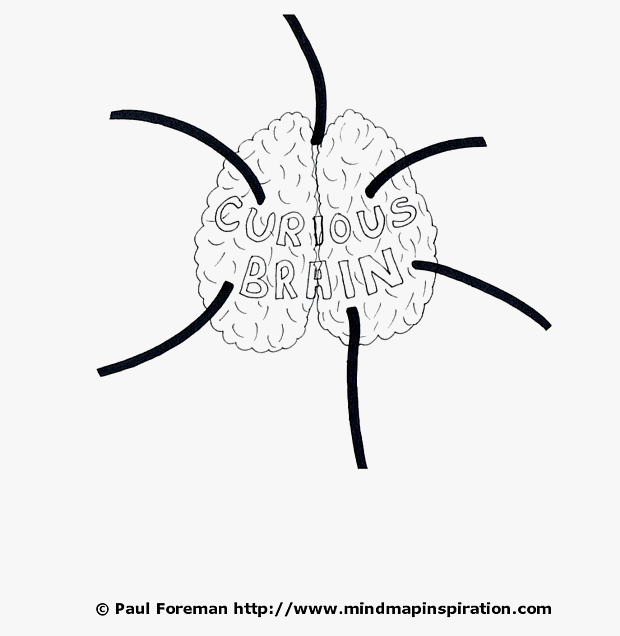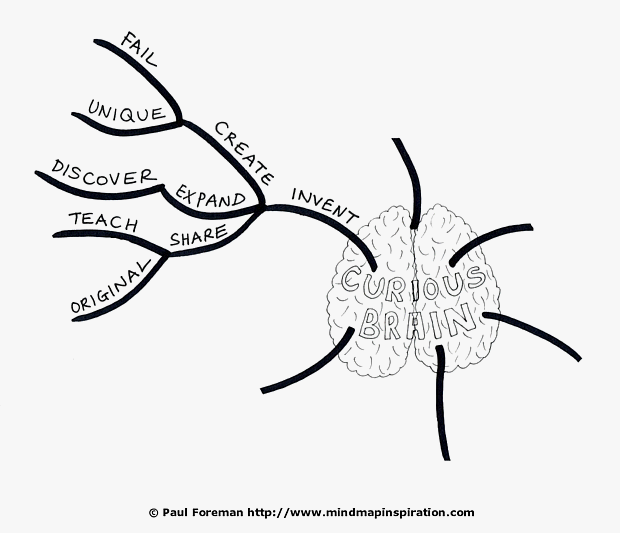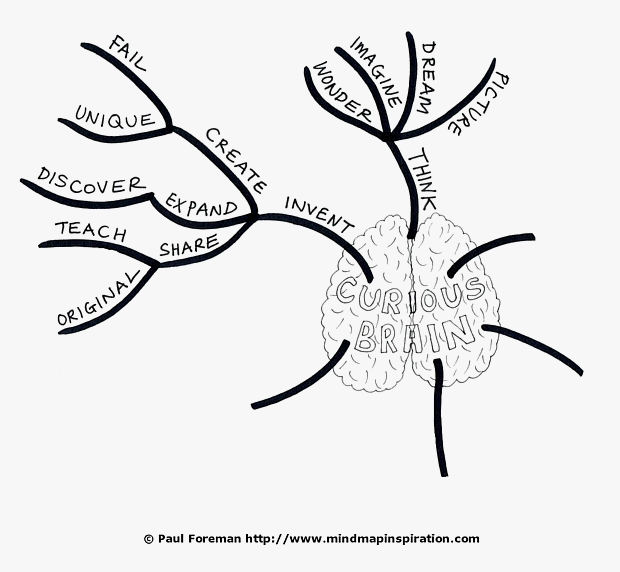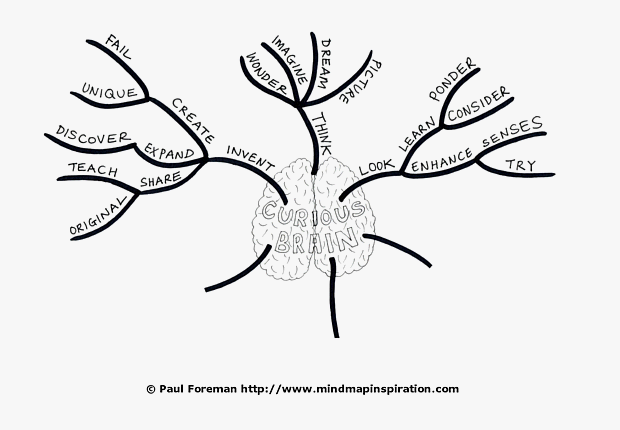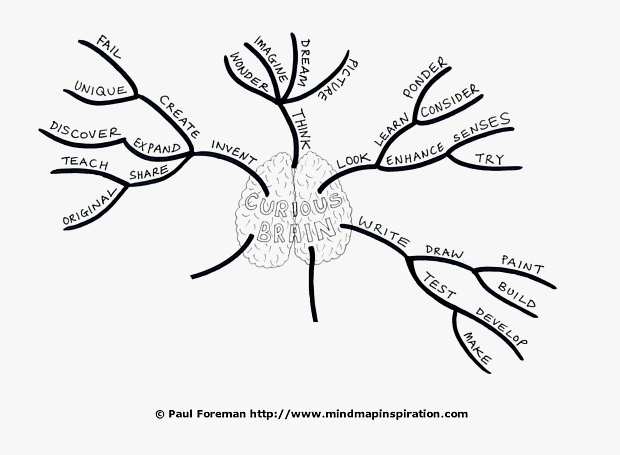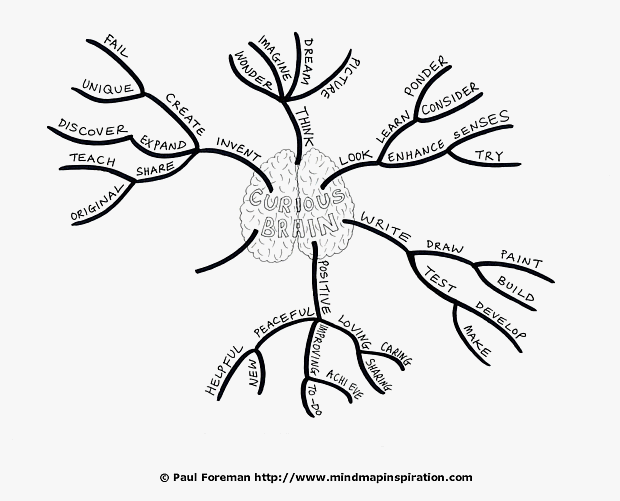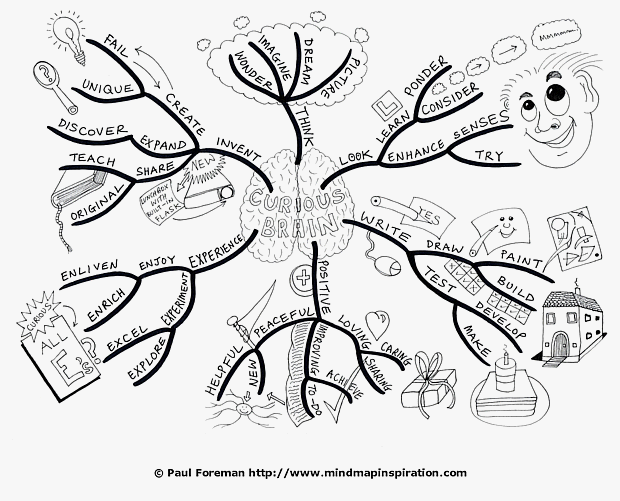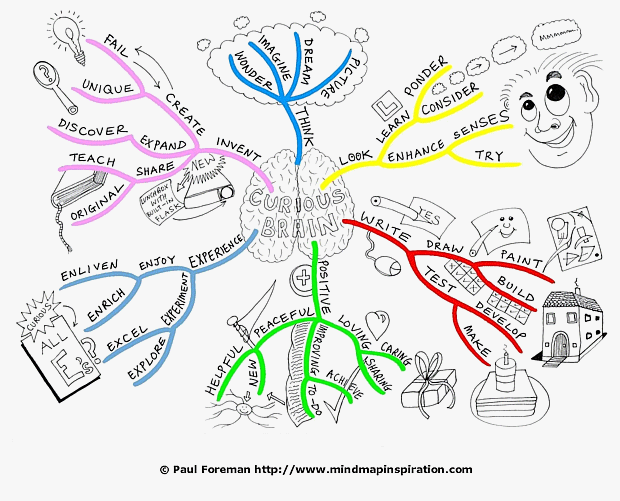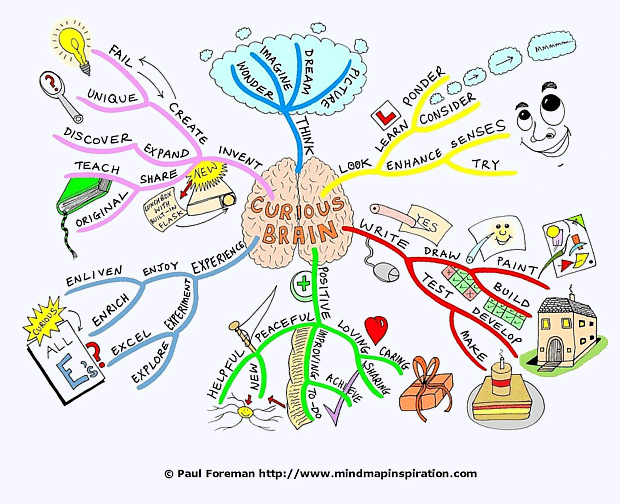Drawing a Mind Map from Start to Finish
As the subject matter for this Mind Map I decide to investigate what a “Curious Brain” is and how it could impact continual learning and development
Starting with a central image that best represents the subject being explored; in this case I have used an illustration of a brain and have started to add main branches (initially I work in pencil so that adjustments can be made if necessary before adding ink and colour)
To avoid the Mind Map becoming crowded and particularly if you are using it as a memory aid, it is preferable to have no more than 11 main branches
I start to consider what a Curious Brain is.
The easiest way to investigate this is simply to start adding keywords and branching out without too much contemplation or the mind starts to think in a linear fashion.
The beauty and diversity of using Mind Maps is that it encourages radial thinking which uncovers wider and more interesting ideas.
From the starting point of “invent” I travel quickly to other words (it is best to use single words as a phrase can stop the train of thought)
I add the word “think” as another main branch and then progress again by adding more main keywords
“Look” comes to mind, so I then add that keyword and branch out further
Same again for the word “write”
And “positive”
Followed by “experience”
I could have added more main branches and even more words to each branch, as the system of Mind Mapping creates infinite possibilities, yet I decide I have enough branches for this particular Mind Map.
I have covered “Curious Brain” in my own unique way – if anyone else had Mind Mapped this subject they may well have formed an entirely different set of keywords and that is another fantastic element of Mind Mapping.
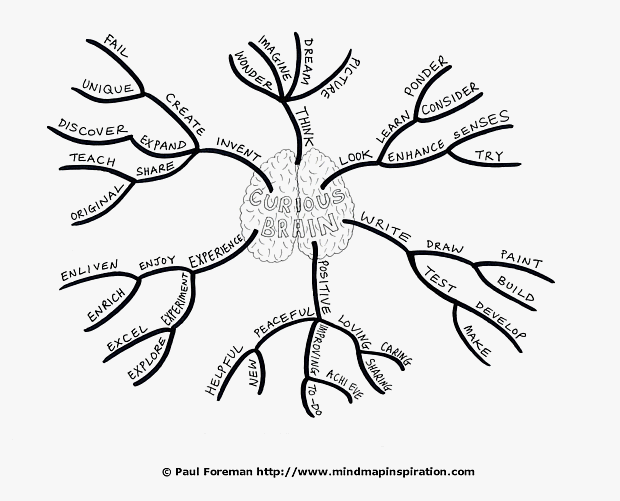
To make the Mind Map more memorable and exciting to look at I add sketches and illustrations, concentrating on simplicity. I always have in mind when adding pictures – what is the best or easiest way to represent the words and concepts. It is not necessary to illustrate every word and in fact, it is just as likely that the images get created when adding the keywords. I have split the tasks here for demonstration purposes only. Because Mind Maps use a combination of words and images they are far more brain-friendly than a list of text; brilliant for memorising information and fun to create.
Here is the Mind Map with sketches added.
It is preferable to colour each branch differently. In this case, I used a very thick pen to create the branches and that helped when it came to filling the colour by computer. Normally the main branches from the central image would be thicker working out to thinner branches as you add new words so that it is easy to see the main points.
I then add colour to the rest of the images to highlight the Mind Map.
Two brilliant tips here are to use light colours and spread the colours fairly evenly throughout the Mind Map so that there is a good balance overall.
Read more...


